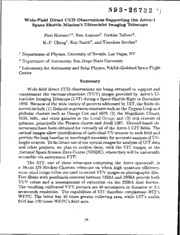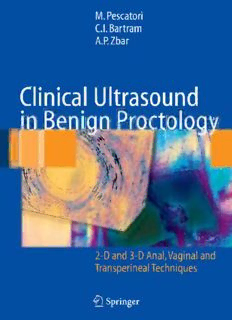
Clinical Ultrasound in Benign Proctology: 2-D and 3-D Anal, Vaginal and Transperineal Techniques PDF
Preview Clinical Ultrasound in Benign Proctology: 2-D and 3-D Anal, Vaginal and Transperineal Techniques
M.Pescatori C.I.Bartram A.P.Zbar Clinical Ultrasound in Benign Proctology 2-D and 3-D Anal,Vaginal and Transperineal Techniques Foreword by R.J.Nicholls 123 EDITORS Mario Pescatori Clive I.Bartram Villa Flaminia Hospital St.Mark’s Hospital Rome,Italy Harrow,United Kingdom Andrew P.Zbar School ofClinical Medicine and Research The University ofWest Indies Queen Elizabeth Hospital,Barbados CONTRIBUTORS Paola De Nardi Maria Spyrou Department ofSurgery Villa Flaminia Hospital San Raffaele Scientific Institute Rome,Italy Milan,Italy Stella Ayabaca Carlo Ratto Villa Flaminia Hospital Department ofSurgical Sciences Rome,Italy Gemelli Hospital Rome,Italy Library ofCongress Control Number:2006923047 ISBN-10 88-470-0366-0 Springer Milan Berlin Heidelberg New York ISBN-13 978-88-470-0366-8 Springer Milan Berlin Heidelberg New York This work is subject to copyright.All rights are reserved,whether the whole or part ofthe material is concerned,specifically the rights oftranslation,reprinting,reuse ofillustrations,recitation,broadcasting, reproduction on microfilm or in any other way,and storage in data banks.Duplication ofthis publication or parts thereofis permitted only under the provisions ofthe Italian Copyright Law in its current version, and permission for use must always be obtained from Springer.Violations are liable to prosecution under the Italian Copyright Law. Springer is a part ofSpringer Science+Business Media springer.com © Springer-Verlag Italia 2006 Printed in Italy The use ofgeneral descriptive names,registered names,trademarks,etc.in this publication does not imply, even in the absence ofa specific statement,that such names are exempt from the relevant protective laws and regulations and therefore free for general use. Product liability:The publishers cannot guarantee the accuracy ofany information about dosage and application contained in this book.In every individual case the user must check such information by consulting the relevant literature. Cover design:estudio Calamar,Barcelona,Spain Typesetting:Graficando,Milan,Italy Printing:Arti Grafiche Nidasio,Assago (MI),Italy Foreword A large proportion ofthe proctologist’s work includes common benign disor- ders ofthe sphincter and pelvic floor musculature and anorectal sepsis.Ultra- sound has been part of the pretreatment assessment of these for many years. It adds to clinical examination and may supply the essential information on which the management decision is taken.Most importantly it gives an objec- tive picture ofthe pathology,which is vital for discussion among clinicians and radiologists as part ofthe decision-taking process.Thus it supplies a permanent record not only useful for diagnosis and treatment but also for assessing out- comes after treatment.It may have special medicolegal value.The role ofultra- sound in research has been considerable.For example,it has enabled a greater understanding ofthe anatomy ofthe sphincter and pelvic floor and it has made a major contribution to the assessment of incontinence and its management. It can give important information beyond the clinical examination in estab- lishing the surgical anatomy ofanorectal sepsis. Ultrasonography has developed immensely during the last twenty years.In proctology,its initial application to rectal cancer has expanded owing to the invention ofprobes suitable for anal and pelvic floor imaging.The introduction of three-dimensional ultrasound and,latterly,transperineal sonography has increased the opportunities and sensitivity for static and now dynamic assessment. This book is written by authors who have played a major part in the devel- opment of ultrasonography in proctology.Therefore,it carries the authority of understanding and experience.In dealing with all aspects of benign anal and pelvic disorders,the authors give an up-to-date account ofits present role with indications ofpotential future developments.The text is detailed and is a mine of information that will be useful to all practitioners dealing with proc- tological conditions.It will therefore appeal not only to surgeons and radiolo- gists but also to gastroenterologists and primary care physicians whether in established independent practice or in training.The bibliography is extensive and will be a most valuable resource to the reader.It is clearly written and the illustrations are ofhigh quality and very informative. Clinical Ultrasound in Benign Proctologywill be of great value to all prac- titioners involved in coloproctology. March,2006 R.J.Nicholls Harrow,UK Preface Since the introduction ofendoluminal ultrasound for the assessment ofanorec- tal diseases in 1989 by Law and Bartram,the fundamental investigative algorithm for functional disorders,in particular,the management offecal incontinence, has changed dramatically.This period of investigative ultrasonography,driv- en by radiologists throughout Europe and North America has changed our understanding and perspective of anorectal anatomy.It has also enabled the marriage of our knowledge of healthy and disordered anorectal physiology with the relevant imaging and has allowed surgical treatments and recon- structions to be directed using an advanced morphological interpretation. This approach has guided a sophisticated management of medical and surgi- cal therapies towards complicated cryptogenic and inflammatory bowel dis- ease-related perirectal sepsis,preventing recurrence and preserving continence. In the area of evacuatory dysfunction presenting to specialized pelvic floor clinics,endoanal,transperineal and transintroital ultrasound has significant- ly contributed to the anatomic understanding and clinical significance ofrec- toceles,enteroceles,rectoanal intussusception and incipent rectal prolapse, providing clinical correlates for more directed operative therapies or audiovi- sual-based biofeedback treatments.The recent introduction of3-dimensional reconstructive axial ultrasound has provided a more ‘surgical’view ofcompli- cated fistula-in-ano which has correlated with more expensive and less avail- able gold standard modalities such as enhanced magnetic resonance (MR) fis- tulography,resulting in a specialized approach towards this problem as well as delivering a better basis for medical therapies such as fibrin glue instillation or,in specialized circumstances,anti-TNF treatments in perianal Crohn’s dis- ease.Three-dimensional ultrasound has also provided a coronal interpreta- tion for incomplete sphincteroplasty in patients with persistent or recurrent fecal incontinence who present with suboptimal outcomes.It has also directed specialist coloproctological reoperation for those patients with objective prog- nostic indicators more likely to result in operative success.The recent intro- duction ofsimple transperineal sonography (although its interpretation is more involved) has created an opportunity in certain anorectal disorders to over- come some of the problems inherent to the endoluminal approach where it VI Preface may have a place in those patients with endoanal luminal distortion prevent- ing the deployment ofa probe assembly.Here too,in complex perirectal infec- tions transperineal sonography can overcome the limited focal distance ofthe endoanal probe in defining laterally disposed extrasphincteric fistulae as well as demonstrating translevator extensions above the puborectalis floor where cou- pling ofan endoanal probe is relatively poor.In this circumstance,transperineal sonography can also assist in delineating whether supralevator disease is an extension ofperianal infection or whether it has a primary pelvirectal origin. Comparative studies are required between these newer modalities and con- ventional technologies such as enhanced MR imaging,where initial data sug- gests that transperineal ultrasound provides complementary information rather than competitive information.The indication par excellencefor transperineal ultrasound is the dynamic real-time interpretation of compartment interac- tion in patients presenting with rectal evacuation disorders where colonic tran- sit is normal by its use ofsimulated defecation maneuvers and forcible strain- ing,although there is much work required here to assess the objective effects ofhysterectomy as well as the categorized interpretation oftransperineal images in patients with coincident uterovaginal prolapse.What is clear is that there is an increasing onus on coloproctologists to understand,interpret and perform the range of anal ultrasonography available in patients with complex anorec- tal disorders and to correlate these findings with operative indications and with postoperative functional outcomes.Such a view provides stimulation for surgeons to become actively involved in the performance and accreditation of all forms ofanorectal sonography.There is a need for close cooperation between radiologists and colorectal surgeons in the accreditation and training in this important modality as part oftheir wider colorectal apprenticeship.With this in mind,although there are several texts available discussing endoanal ultra- sound,our approach here is novel,as it presents the operative techniques used based on ultrasonographic interpretations from the surgeons’point ofview. In the construction ofthis atlas,we are indebted to the invaluable assistance ofPaola De Nardi for the coordination ofthe text and figures. Mario Pescatori Clive I.Bartram Andrew P.Zbar Rome,Italy London,United Kingdom St.Michael,Barbados Table of Contents FOREWORD . . . . . . . . . . . . . . . . . . . . . . . . . . . . . . . . . . . . . . . . . . . . . . . . . . . . . . III R.J.Nicholls PREFACE . . . . . . . . . . . . . . . . . . . . . . . . . . . . . . . . . . . . . . . . . . . . . . . . . . . . . . . . . V M.Pescatori,C.I.Bartram,A.P.Zbar Chapter 1 SURGEON PERFORMED ULTRASOUND IN PROCTOLOGICAL PRACTICE:AN OVERVIEW . . . . . . . . . . . . . . . . . . . . . . 1 A.P.Zbar Introduction. . . . . . . . . . . . . . . . . . . . . . . . . . . . . . . . . . . . . . . . . . . . . . . . . . . . . . . 1 Ultrasound in Perianal Abscess and Fistula-in-Ano . . . . . . . . . . . . . . . . . . . . . 2 Ultrasound Assessment of Fecal Incontinence . . . . . . . . . . . . . . . . . . . . . . . . . 4 Endoanal,Transvaginal and Dynamic Transperineal Endosonography in Functional Bowel Disorders . . . . . . . . . . . . . . . . . . . . . . . 5 References . . . . . . . . . . . . . . . . . . . . . . . . . . . . . . . . . . . . . . . . . . . . . . . . . . . . . . . . 7 Chapter 2 CLINICAL USE OF TWO-DIMENSIONAL ENDOANAL AND TRANSVAGINAL SONOGRAPHY. . . . . . . . . . . . . . . . . . . . . . . . . . . . . . . . 11 M.Pescatori,S.Ayabaca,M.Spyrou,P.De Nardi Introduction . . . . . . . . . . . . . . . . . . . . . . . . . . . . . . . . . . . . . . . . . . . . . . . . . . . . . . 11 Normal Anatomy (Endoanal and Transvaginal) . . . . . . . . . . . . . . . . . . . . . . . . 12 Anal Sepsis . . . . . . . . . . . . . . . . . . . . . . . . . . . . . . . . . . . . . . . . . . . . . . . . . . . . . . . . 13 Anal Abscess . . . . . . . . . . . . . . . . . . . . . . . . . . . . . . . . . . . . . . . . . . . . . . . . . . . 13 Intersphincteric Abscess . . . . . . . . . . . . . . . . . . . . . . . . . . . . . . . . . . . . . . . . . 16 Chronic Perirectal Sepsis . . . . . . . . . . . . . . . . . . . . . . . . . . . . . . . . . . . . . . . . . 17 Perianal Abscess Following Hemorrhoidectomy . . . . . . . . . . . . . . . . . . . . 18 Intersphincteric Fistula. . . . . . . . . . . . . . . . . . . . . . . . . . . . . . . . . . . . . . . . . . . 19 Trans-Sphincteric Fistula . . . . . . . . . . . . . . . . . . . . . . . . . . . . . . . . . . . . . . . . . 20 VIII Table of Contents Recurrent Trans-Sphincteric Fistula . . . . . . . . . . . . . . . . . . . . . . . . . . . . . . . . 24 High Trans-Sphincteric Fistula with Ischiorectal and Deep Retroanal Abscess . . . . . . . . . . . . . . . . . . . . . . . . . . . . . . . . . . . . . 26 Horseshoe Fistula . . . . . . . . . . . . . . . . . . . . . . . . . . . . . . . . . . . . . . . . . . . . . . . 27 Rectovaginal Fistula . . . . . . . . . . . . . . . . . . . . . . . . . . . . . . . . . . . . . . . . . . . . . 29 Pouch-Cutaneous Fistula . . . . . . . . . . . . . . . . . . . . . . . . . . . . . . . . . . . . . . . . . 30 Crohn’s Disease . . . . . . . . . . . . . . . . . . . . . . . . . . . . . . . . . . . . . . . . . . . . . . . . . . . . 32 Perianal Abscess . . . . . . . . . . . . . . . . . . . . . . . . . . . . . . . . . . . . . . . . . . . . . . . . 32 Recurrent Fistula . . . . . . . . . . . . . . . . . . . . . . . . . . . . . . . . . . . . . . . . . . . . . . . . 34 Fecal Incontinence . . . . . . . . . . . . . . . . . . . . . . . . . . . . . . . . . . . . . . . . . . . . . . . . . 35 Obstetric Trauma . . . . . . . . . . . . . . . . . . . . . . . . . . . . . . . . . . . . . . . . . . . . . . . . 36 Following STARR Procedure . . . . . . . . . . . . . . . . . . . . . . . . . . . . . . . . . . . . . . 38 Fecal Incontinence and Recurrent Rectal Prolapse. . . . . . . . . . . . . . . . . . . 40 Postsurgical Miscellanea . . . . . . . . . . . . . . . . . . . . . . . . . . . . . . . . . . . . . . . . . . . . 42 Postoperative Fibrosis and Abscess . . . . . . . . . . . . . . . . . . . . . . . . . . . . . . . . 42 Post Milligan-Morgan Hemorrhoidectomy, Stapled Hemorrhoidopexy and STARR . . . . . . . . . . . . . . . . . . . . . . . . . . . . . 45 Evacuatory Disorders . . . . . . . . . . . . . . . . . . . . . . . . . . . . . . . . . . . . . . . . . . . . . . . 47 Enterocele and Rectal Intussusception . . . . . . . . . . . . . . . . . . . . . . . . . . . . . 47 Solitary Rectal Ulcer Syndrome (SRUS) . . . . . . . . . . . . . . . . . . . . . . . . . . . . . 48 Rectal Internal Mucosal Prolapse . . . . . . . . . . . . . . . . . . . . . . . . . . . . . . . . . . 49 Anismus . . . . . . . . . . . . . . . . . . . . . . . . . . . . . . . . . . . . . . . . . . . . . . . . . . . . . . . 50 Congenital Conditions. . . . . . . . . . . . . . . . . . . . . . . . . . . . . . . . . . . . . . . . . . . . . . 51 Rectal Duplication. . . . . . . . . . . . . . . . . . . . . . . . . . . . . . . . . . . . . . . . . . . . . . . 51 Imperforate Anus Following Cut-Back Anoplasty . . . . . . . . . . . . . . . . . . . . 52 Anal Fissure . . . . . . . . . . . . . . . . . . . . . . . . . . . . . . . . . . . . . . . . . . . . . . . . . . . . . . . 53 Proctalgia . . . . . . . . . . . . . . . . . . . . . . . . . . . . . . . . . . . . . . . . . . . . . . . . . . . . . . . . . 54 References . . . . . . . . . . . . . . . . . . . . . . . . . . . . . . . . . . . . . . . . . . . . . . . . . . . . . . . . 55 Chapter 3 THREE-DIMENSIONAL ENDOANAL ULTRASOUND IN BENIGN PROCTOLOGICAL PRACTICE. . . . . . . . . . . . . . . . . . . . . . . . . . . . . 59 C.I.Bartram,M.Pescatori Introduction . . . . . . . . . . . . . . . . . . . . . . . . . . . . . . . . . . . . . . . . . . . . . . . . . . . . . . 59 Normal Anatomy . . . . . . . . . . . . . . . . . . . . . . . . . . . . . . . . . . . . . . . . . . . . . . . . . . 60 Fecal Incontinence . . . . . . . . . . . . . . . . . . . . . . . . . . . . . . . . . . . . . . . . . . . . . . . . . 62 Anal Fistula and Abscess . . . . . . . . . . . . . . . . . . . . . . . . . . . . . . . . . . . . . . . . . . . . 64 Constipation and Proctalgia . . . . . . . . . . . . . . . . . . . . . . . . . . . . . . . . . . . . . . . . . 67 References . . . . . . . . . . . . . . . . . . . . . . . . . . . . . . . . . . . . . . . . . . . . . . . . . . . . . . . . 68 Table of Contents IX Chapter 4 STATIC AND DYNAMIC TRANSPERINEAL SONOGRAPHY IN BENIGN PROCTOLOGY . . . . . . . . . . . . . . . . . . . . . . . . . . . . . . . . . . . . . . . . . . 71 A.P.Zbar Introduction . . . . . . . . . . . . . . . . . . . . . . . . . . . . . . . . . . . . . . . . . . . . . . . . . . . . . . 71 Normal Anatomy . . . . . . . . . . . . . . . . . . . . . . . . . . . . . . . . . . . . . . . . . . . . . . . . . . 73 Fecal Incontinence . . . . . . . . . . . . . . . . . . . . . . . . . . . . . . . . . . . . . . . . . . . . . . . . . 74 Anal Fistula . . . . . . . . . . . . . . . . . . . . . . . . . . . . . . . . . . . . . . . . . . . . . . . . . . . . . . . 76 Recto-Vaginal Fistula . . . . . . . . . . . . . . . . . . . . . . . . . . . . . . . . . . . . . . . . . . . . . . . 78 Transperineal Ultrasound in Evacuatory Dysfunction . . . . . . . . . . . . . . . . . . . 80 Rectoanal Intussusception . . . . . . . . . . . . . . . . . . . . . . . . . . . . . . . . . . . . . . . 80 Enterocele. . . . . . . . . . . . . . . . . . . . . . . . . . . . . . . . . . . . . . . . . . . . . . . . . . . . . . 81 Peritoneocele . . . . . . . . . . . . . . . . . . . . . . . . . . . . . . . . . . . . . . . . . . . . . . . . . . . 82 Rectal Prolapse . . . . . . . . . . . . . . . . . . . . . . . . . . . . . . . . . . . . . . . . . . . . . . . . . 83 Rectocele . . . . . . . . . . . . . . . . . . . . . . . . . . . . . . . . . . . . . . . . . . . . . . . . . . . . . . 84 Evacuatory Block Due to Extra-Rectal Mass . . . . . . . . . . . . . . . . . . . . . . . . . 86 Familial Hypertrophic Internal Sphincter . . . . . . . . . . . . . . . . . . . . . . . . . . . . . . 87 Imperforate Anus . . . . . . . . . . . . . . . . . . . . . . . . . . . . . . . . . . . . . . . . . . . . . . . . . . 89 References . . . . . . . . . . . . . . . . . . . . . . . . . . . . . . . . . . . . . . . . . . . . . . . . . . . . . . . . 91 CONCLUSIONS . . . . . . . . . . . . . . . . . . . . . . . . . . . . . . . . . . . . . . . . . . . . . . . . . . . . 93 1 Surgeon Performed Ultrasound in Proctological Practice:an Overview Andrew P.Zbar Introduction Since endoluminal ultrasonography was first introduced in 1989 for the assess- ment ofanal and rectal disorders by Law and Bartram,[1] it has become a sta- ple ofthe coloproctological armamentarium.Following its introduction,Beynon and colleagues [2] correlated images with individual rectal and anal wall lay- ers,(mucosa,submucosa,muscularis propria,longitudinal muscle and perirec- tal fat),principally for estimation oftumor infiltration ofthe rectum.This work was independently followed by Burnett and Bartram [3] and by Papachrysos- tomou et al.[4] defining the constitutive variations in normal anal anatomy with age and gender and showing a ‘natural’increase in thickness ofthe inter- nal anal sphincter (IAS) with advancing age. Recently,3-dimensional reconstruction of stacked axial images obtained with an automated puller (or incorporated into in-built probe housing) has attempted to correlate manometrically defined high-pressure zones with anatom- ical separations in the external anal sphincter (EAS) and with the puborectal- is component ofthe levator ani complex [5].This technology has also clarified the anatomical disposition of the component parts of the EAS into a 3-tiered structure,(subcutaneous,superficial and deep),which has settled a long-stand- ing argument concerning this muscle [6] and which has been validated by endoanal magnetic resonance imaging (MRI) in the display ofhigh-resolution coronal images [7,8].In addition,this technique has shown the constitutive anatomy of the longitudinal muscle [9] which has clinical relevance in the spread ofperirectal sepsis [10]. Our group has extended the use ofsurgeon-performed ultrasonography to transperineal (transcutaneous) assessment of the perineum and pelvic floor for definition of the anterior,middle and posterior pelvic compartments in dynamic use for patients presenting with the symptom complex of evacuato- ry dysfunction [11,12].In an additional recent use,Wedemeyer and colleagues [13] and Mallouhi et al.[14] have demonstrated its clinical value in the deter- mination of the course of complex tracks in Crohn’s-related and cryptogenic
Description:The list of books you might like

Mind Management, Not Time Management

Corrupt (Devil's Night #1)

$100m Offers

Credence
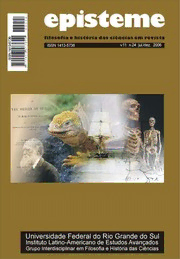
Episteme - Filosofia e História das Ciências em Revista vol. 11, n. 24, 2006
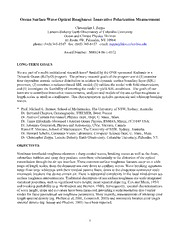
DTIC ADA523865: Ocean Surface Wave Optical Roughness: Innovative Polarization Measurement
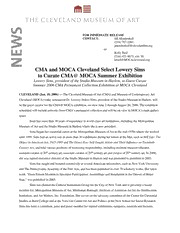
Exhibition - CMA@MOCA

IFRS 15 investment management companies
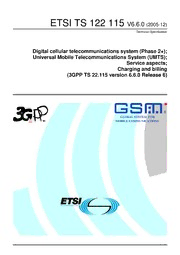
TS 122 115 - V6.6.0 - Digital cellular telecommunications system (Phase 2+); Universal Mobile Telecommunications System (UMTS); Service aspects; Charging and billing (3GPP TS 22.115 version 6.6.0 Release 6)

Description of two new species of Nesogobius (Pisces: Gobioidei: Gobiidae) from southern Australia

Jagged Alliance 2
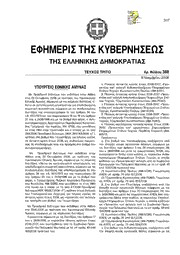
Greek Government Gazette: Part 3, 2006 no. 388
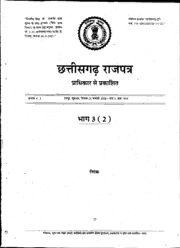
Chhattisgarh Gazette, 2008-01-25, No. 4, Pt. 3 (2)

Sniper · 160 tödliche Treffer
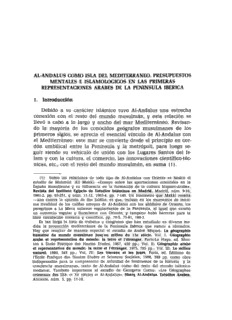
al-andalus como isla del mediterraneo. presupuestos - RUA
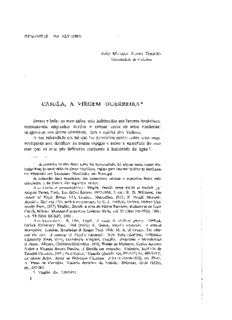
camila, a virgem guerreira
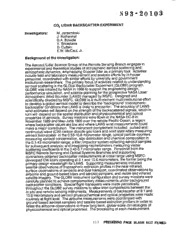
NASA Technical Reports Server (NTRS) 19930010914: CO2 lidar backscatter experiment
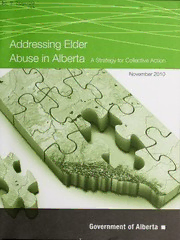
Addressing elder abuse in Alberta : a strategy for collective action

NASA Technical Reports Server (NTRS) 20070007305: Stroboscopic Vision as a Treatment for Space Motion Sickness

Queen's Alumni Review 2006
